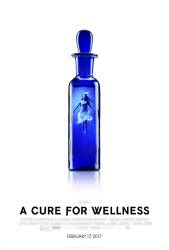Factual error: The license plate of the car that takes the protagonist to the sanitarium is GR 36E46. That's not a valid Swiss plate: GR indicates the canton of Graubünden, but other than that it is supposed to have only digits and no letters.
Factual error: Speaking with Miss Watkins, the protagonist learns of the backstory of the complex, and how in 1814, the local baron was running all sorts of experiments on "his own peasants." The movie though is set in Switzerland, where the power of nobilty was considerably lower and less traditionally 'feudal' than in most neighbouring countries (and stayed as such even after the Congress of Vienna). In particular this castle supposedly is in the canton of Graubünden (aka Grisons), where within the context of the Three Leagues you'd have been hard pressed finding a 'baron' ruling lands, a radical prohibition of nobility, titles and particles having been enacted, surely with no life and death powers over his serfs.
Suggested correction: Even though Swiss nobilities were prohibited doesn't mean anyone with a nobility wasn't allowed to own land in Switzerland. They were simply not priviledged as a noble anymore. He could have been made Baron in Italy, Austria or France. The Count de Salis-Seewis is still a count to this day, with land and mansions and everything, in Grisons. Of course a Baron could still live in a castle in Switzerland in 1814, even in Grisons. The acts he performed on his serfs were illegal and criminal, but he held it secret.





